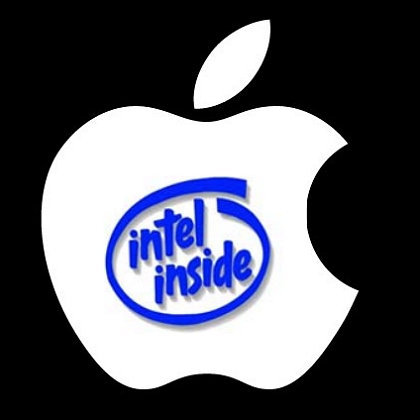The rumor of the day is that Apple is dumping Intel and its x86 architecture for ARM and now the idea that Apple would move to ARM isn’t exactly new. Jason Perlow argued that case a while ago and it seems that Apple intends to migrate their laptop and desktop range to ARM-based chips, the sooner the better……….
Apple is going to show Intel the door, at least as far as laptops are concerned. It won’t be really soon, but we are told it is a done deal.The short story is that Apple is moving the laptop line, and presumably desktops too, to ARM based chips as soon as possible. With A15/Eagle allowing more than 32-bit memory access, things look up, but it seems silly to do so before the full 64 bit cores come in the following generation. Nvidia is directly telling certain favored analysts that they will have Denver out in Q4 of 2012, maybe Q1/2013 and that uses the full on 64-bit ARM instruction set. It won’t be out by then, but that gives you a good estimation of when that ISA will break cover from one vendor or other.At that point, Apple can move to ARM without worrying about obsoleting code with an ISA that is on the verge of changing, and no memory overhead worries either. Basically, it looks like the perfect time.Now you realize why Apple is desperately searching for fab capacity from Samsung, Global Foundries and TSMC. Intel doesn’t know about this particular change of heart yet, which is why they are dropping all the hints about wanting Apple as a foundry customer. Once they realize that Apple will be fabbing ARM chips at the expense of x86 parts, they may not be so eager to provide them wafers on advanced processes.So short story, x86 is history on Apple laptops, or will be in 2-3 years. In any case, it is a done deal, Intel is out and Apple chips are in. The only question left is if they will use their own core, a Samsung core or the generic ARM black box. My bet is on generic for the first round, with a custom uncore, and moving to progressively more proprietary features with each successive generation.Here are the key questions:
Does Apple and ARM make sense? Yes. Apple would be able to unify its platform and simplify into one ecosystem. It’s likely that iOS and Mac OS merge at some point. We all know iOS rules the roost and that system happens to run on ARM. In addition, Apple’s laptops are likely to be more of the MacBook Air variety. Think tablet/laptop hybrids. That fact favors ARM too. The problem with all of this is you have to wonder how ARM will play on high-performance Mac laptops and desktops.
When would all of Apple be ARM? That move would take some time. If laptops went in 2013, all of Macs would probably follow a few years later. Why? Raw power.
Would Mac need to be x86? Not at all. ARM chips are likely to be good enough. Meanwhile, hulking Mac towers may not even exist in 2016.
Could Apple go the custom chip route again? Sure it could and already does. The pros would be better margins. The cons is that Apple would have to keep up with Intel’s tick tock cadence. Good luck with that.Jason O’Grady notes:
Apple acquired ARM chip maker P.A. Semi in April 2008 for around $300 million in cash which Steve Jobs then explained as a way to acquire expertise and technology to help run increasingly sophisticated software on iPhones and iPods. Shortly thereafter Apple acquired ARM core experts Intrinsity for a reported $121 million. Then in 2009 Apple hired two former CTOs from Advanced Micro Devices (AMD).
In April 2010 all the talk was about how Apple could/would/shouldacquire ARM.
Is good enough processors really good enough? Here’s the thing with processing power. You always have more than you need—until some killer apps comes along and you need more performance. Performance doesn’t matter until it does.
What card can Intel play? VentureBeat made the argument that Intel’s Tri-Gate transistor announcement this week makes the Apple -ARM talk pure folly. The problem with the argument is that Tri-Gate is manufacturing process not an architecture. Intel execs avoided all talk of an architecture Holy War with ARM and x86. Reading between those comments leaves the door open that Intel could use Tri-Gate for ARM architecture. Also:
- Intel: Moore’s Law has been cubed; Welcome to 3-D transistors
- Why Intel’s 22nm technology really matters
- The case for Intel making Apple’s mobile chips: A Wintel of the post-PC era
Is the ARM talk overblown? Yes. Let’s say Intel does ARM—a move that would make sense since the chip giant needs the tablet and smartphone market. Apple would stay on board. With the timelines SemiAccurate is posing, Intel will be onto 14nm. Remember Intel’s manufacturing process is second to none. If it comes down to moving chips, Intel isn’t going to sweat architecture religion.
Sources :semiaccurate,zdnet
[ttjad keyword=”general”]



